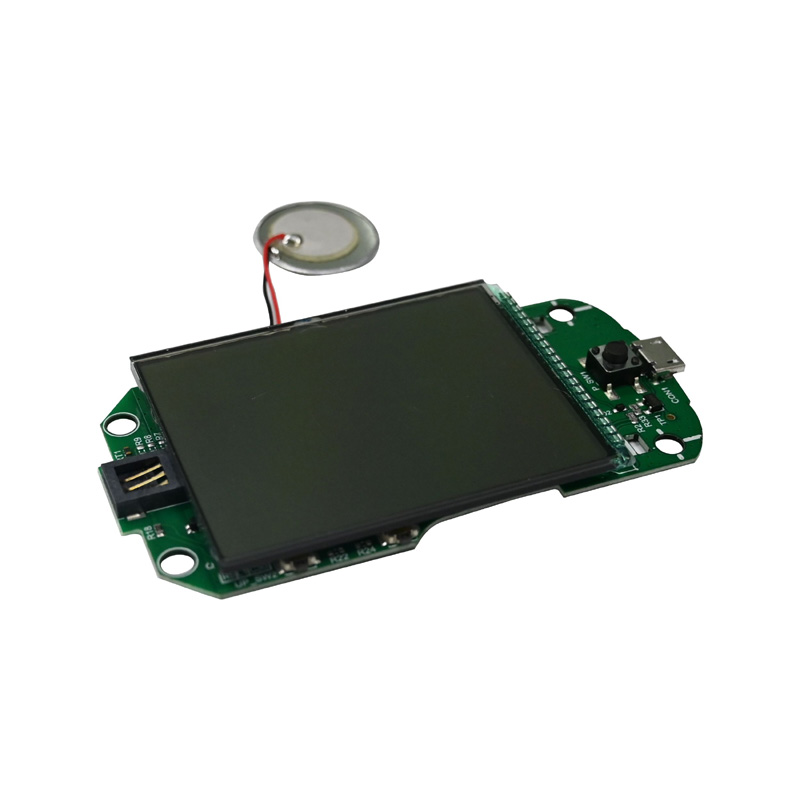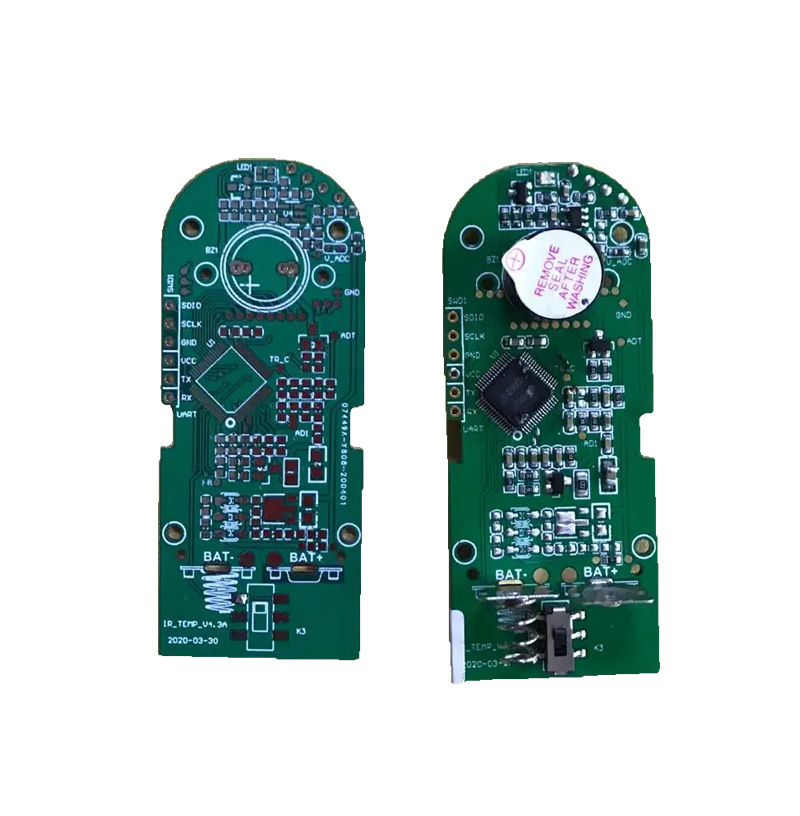- English
- Español
- Português
- русский
- Français
- 日本語
- Deutsch
- tiếng Việt
- Italiano
- Nederlands
- ภาษาไทย
- Polski
- 한국어
- Svenska
- magyar
- Malay
- বাংলা ভাষার
- Dansk
- Suomi
- हिन्दी
- Pilipino
- Türkçe
- Gaeilge
- العربية
- Indonesia
- Norsk
- تمل
- český
- ελληνικά
- український
- Javanese
- فارسی
- தமிழ்
- తెలుగు
- नेपाली
- Burmese
- български
- ລາວ
- Latine
- Қазақша
- Euskal
- Azərbaycan
- Slovenský jazyk
- Македонски
- Lietuvos
- Eesti Keel
- Română
- Slovenski
- मराठी
- Srpski језик
Smart blood glucose meter PCBA
Send Inquiry
Unixplore Electronics has been dedicated to High quality Smart blood glucose meter PCBA design and manufacture since we built in 2011.
To make a Smart Blood Glucose PCBA, you'll need knowledge of electronics design, circuit board layout, and microcontroller programming. Here is a general step-by-step process that can help you get started:
Gather the required components and design tools: Glucose sensor, Microcontroller, Power Supply, LCD display, and other needed components. You will also need a PCB design software.
Design the circuit schematic: Use a PCB design software to create a circuit schematic diagram. This will be the blueprint for the PCB layout.
Layout the PCB: After creating the schematic diagram, use the same PCB design software to layout the components on the PCB board.
Fabricate the PCB: Send your PCB design file to a PCB manufacturer to have it fabricated.
Solder the components: After receiving the bare PCB, solder the components onto it carefully.
Program the microcontroller: Connect the microcontroller to a computer and program it with the hex file to read the glucose sensor data and display it on the LCD screen.
Test the PCB: Once completed, test the PCB to ensure that it is working correctly.
* Blank PCB made, components purchased by us
* PCB fabrication with parts fully assembled
* 100% Function Tested OK before shipping
* RoHS compliant, Lead-free manufacturing process
* Quick delivery, with independent ESD package
* One stop electronic manufacturing service for PCB design, PCB layout, PCB manufacture, components procurement, PCB SMT and DIP assembly, IC programming, function test, packaging and delivery
| Parameter | Capability |
| Layers | 1-40 layers |
| Assembly Type | Through-Hole (THT), Surface Mount (SMT), Mixed (THT+SMT) |
| Minimum Component Size | 0201(01005 Metric) |
| Maximum Component Size | 2.0 in x 2.0 in x 0.4 in (50 mm x 50 mm x 10 mm) |
| Component Package Types | BGA, FBGA, QFN, QFP, VQFN, SOIC, SOP, SSOP, TSSOP, PLCC, DIP, SIP, etc. |
| Minimum Pad Pitch | 0.5 mm (20 mil) for QFP, QFN, 0.8 mm (32 mil) for BGA |
| Minimum Trace Width | 0.10 mm (4 mil) |
| Minimum Trace Clearance | 0.10 mm (4 mil) |
| Minimum Drill Size | 0.15 mm (6 mil) |
| Maximum Board Size | 18 in x 24 in (457 mm x 610 mm) |
| Board Thickness | 0.0078 in (0.2 mm) to 0.236 in (6 mm) |
| Board Material | CEM-3,FR-2,FR-4, High-Tg, HDI, Aluminum, High Frequency, FPC, Rigid-Flex, Rogers, etc. |
| Surface Finish | OSP, HASL, Flash Gold, ENIG, Gold Finger, etc. |
| Solder Paste Type | Leaded or Lead-Free |
| Copper Thickness | 0.5OZ – 5 OZ |
| Assembly Process | Reflow Soldering, Wave Soldering, Manual Soldering |
| Inspection Methods | Automated Optical Inspection (AOI), X-ray, Visual Inspection |
| Testing Methods In-House | Functional Test, Probe Test, Aging Test, High and Low Temperature Test |
| Turnaround Time | Sampling: 24 hours to 7 days, Mass Run: 10 - 30 days |
| PCB Assembly Standards | ISO9001:2015; ROHS, UL 94V0, IPC-610E class ll |
● Smart blood glucose meter PCBA Function test fixture customized according to client’s test requirements
● Box building service including plastic & metal case mold and part production
● Conformal coating including selective lacquer coating, epoxy resin potting
● Wire harness and cable assembly
● Finished product assembly including box, screen, membrane switch, labelling and customized carton or retail box packing.
● Various third-party tests for PCBA are available upon request
● Product Certification Assistance
-

1. Automatic solderpaste printing
-

2. solderpaste printing done
-

3. SMT pick and place
-

4. SMT pick and place done
-

5. ready for reflow soldering
-

6. reflow soldering done
-

7. ready for AOI
-

8. AOI inspection process
-

9. THT component placement
-

10. wave soldering process
-

11. THT assembly done
-

12. AOI Inspection for THT assembly
-

13. IC programming
-

14. function test
-

15. QC Check and Repair
-

16. PCBA conformal coating Process
-

17. ESD packing
-

18. Ready for Shipping




Home Appliance PCBA
Industrial Control PCBA
Automobile PCBA
Consumer Electronics PCBA
Medical Equipment PCBA
Security System PCBA
Healthcare PCBA
LED Lighting PCBA
IoT PCBA
Electric Gardening Tool PCBA
-
Delivery Service






-
Payment Options

















